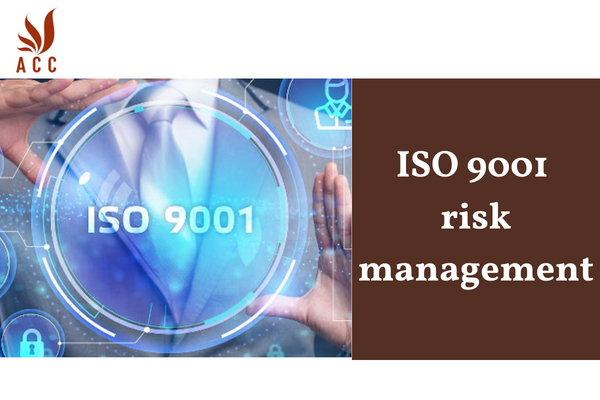ISO 9001:2015, the international standard for quality management systems, requires organizations to implement a risk management process. This process should be used to identify, assess, and control risks that could impact the organization's ability to meet its quality objectives.
This article will provide an overview of risk management as it relates to ISO 9001:2015. It will discuss the key elements of the risk management process and the benefits of implementing a risk management system.

ISO 9001 risk management
1. Understand the ISO 9001 requirements
The first step in implementing risk management under ISO 9001 is to understand the requirements of the standard. Clause 6.1 of ISO 9001 requires organizations to "determine the risks and opportunities that could affect the achievement of the intended results of the quality management system, and the associated consequences." This means that organizations need to identify, assess, and control risks that could impact their ability to meet their quality objectives.
2. Identify risks
The first step in risk assessment is to identify the risks that could impact your organization. This can be done through a variety of methods, such as brainstorming, interviews, and surveys. When identifying risks, it is important to consider both internal and external factors. Internal factors include things like your organization's processes, people, and resources. External factors include things like your customers, suppliers, and the regulatory environment.
3. Assess risks
Once you have identified the risks, you need to assess their likelihood and impact. Likelihood refers to the probability that a risk will occur. Impact refers to the consequences of a risk if it does occur. There are a variety of risk assessment tools and techniques that you can use to assess risks.
4. Control risks
Once you have assessed the risks, you need to develop and implement controls to mitigate them. Controls can be preventive, detective, or corrective. Preventive controls are designed to prevent risks from occurring. Detective controls are designed to identify risks that have occurred. Corrective controls are designed to correct the consequences of risks that have occurred.
5. Monitor and review risks
Risks are constantly changing, so it is important to monitor and review your risk management processes on a regular basis. This will help you to ensure that your risks are still being effectively managed.
Here are some additional tips for implementing risk management under ISO 9001:
- Involve all relevant stakeholders in the risk management process.
- Document your risk management processes and decisions.
- Communicate your risk management findings to your organization.
By following these steps, you can implement a risk management process that will help your organization to meet its quality objectives and improve its overall performance.
6. Frequently asked questions
-
What is ISO 9001 risk management?
-
Answer: ISO 9001 risk management refers to the systematic process of identifying, assessing, and mitigating risks that could impact the quality management system of an organization. It aims to enhance the organization's ability to achieve its objectives and continually improve its performance.
-
-
Why is risk management important in the context of ISO 9001?
- Answer: Risk management is crucial in ISO 9001 as it helps organizations proactively address potential challenges and uncertainties that could affect the quality of their products or services. By identifying and managing risks, organizations can enhance their ability to meet customer requirements and maintain a robust quality management system.
-
What are the key components of ISO 9001 risk management?
- Answer: The key components include risk identification, risk assessment, risk treatment, monitoring and review, and communication. Organizations need to systematically identify and evaluate risks, implement measures to mitigate or exploit them, and regularly monitor and review the effectiveness of these measures.
-
How does ISO 9001 promote a risk-based approach?
- Answer: ISO 9001 promotes a risk-based approach by integrating risk management into the overall quality management system. It encourages organizations to consider risks and opportunities when establishing, implementing, and maintaining their processes, thereby ensuring a more proactive and adaptive approach to quality management.
-
What benefits can organizations gain from implementing ISO 9001 risk management?
- Answer: Implementing ISO 9001 risk management can lead to improved decision-making, enhanced organizational resilience, and better overall performance. It helps organizations identify and capitalize on opportunities while minimizing the negative impact of potential risks, contributing to increased customer satisfaction and sustained success.
Nội dung bài viết:






Bình luận